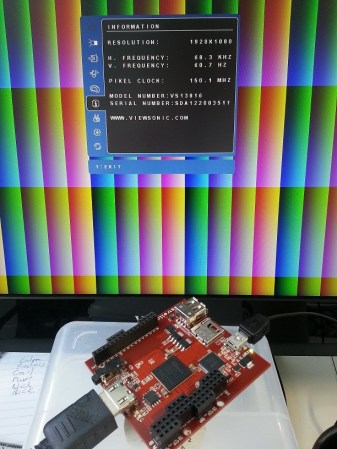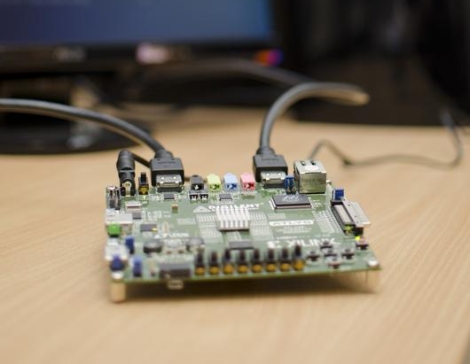
[Hamster] admits this 1080p HDMI hack for an FPGA doesn’t put a signal that’s fully up to specifications. But as you can see in the image above it does output a 1920×1080 image at 60 Hz, which is the size and frequency of full HD video. It falls just short due to some jitter, which may be just fine if this is only being used for early prototyping and will be replaced with a dedicated encoder later in the design process.
Here he’s chosen a Pipistrello board but thinks that any device which has a Spartan 6 chip with the differential pairs connected to an HDMI socket will work. The difficulty of the task comes in serializing four output channels at 1500 Mb/s each. Because of this just coding your logic isn’t going to work. After roughing out the design [Hamster] went back in and chose to manually place some of the components to ensure that data from each channel arrives at the same time.
While you’re messing with HDMI you may also want to give this overlay hack a try.














